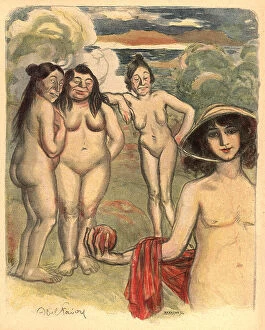Peleus Collection
Peleus, a figure from Greek mythology, is depicted in various artistic works throughout history
All Professionally Made to Order for Quick Shipping
Peleus, a figure from Greek mythology, is depicted in various artistic works throughout history. In one notable scene, Peleus engages in a fierce wrestling match with the sea goddess Thetis. This encounter showcases his strength and determination as he grapples with the powerful deity. Another significant event involving Peleus is "The Judgement of Paris, " where he plays a crucial role. This tale revolves around the dispute between three goddesses: Hera, Athena, and Aphrodite. As an impartial judge, Peleus must decide who deserves the golden apple of discord – a decision that ultimately leads to the Trojan War. One captivating artwork showcasing Peleus is found on the Francois Vase. Created by Ergotimos and Kleitias in the 6th century BC, this masterpiece depicts him alongside Atalanta during their heroic Calydonian Boar Hunt. The intricate details bring this ancient mythological story to life. In later centuries, renowned artists like Peter Paul Rubens and Frans van den Wyngaerde immortalized Peleus' wedding to Thetis through their paintings. These elaborate pieces capture both the grandeur and intimacy of this divine union. Peleus' significance extends beyond mythology into military history as well. Roman legionaries are shown operating ballistas during sieges - formidable war machines employed by armies including those led by brave warriors like Peleus himself. Ancient pottery also provides glimpses into his legend through colorful lithographs depicting scenes such as scorned women or righteous warriors engaged in combat or wrestling matches with Atalanta. Lastly, Sir Edward Coley Burne-Jones's "The Feast of Peleus" transports us to a mid-late 19th-century interpretation of this mythical celebration. Through his artistry, Burne-Jones captures both the opulence and intrigue surrounding these legendary figures.



























